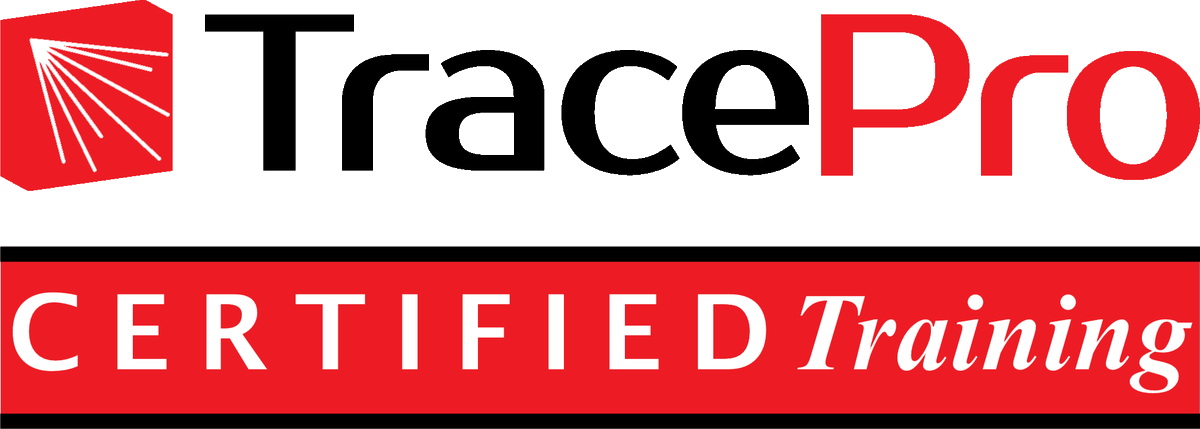
TracePro classes are four-hour, instructor-led, online courses that are a mixture of lecture and hands-on examples. A digital copy of the course notes will be supplied. Attendees wishing to complete the examples during the class must provide their own TracePro license.
TracePro 101 - Introduction to TracePro
Designed for new users, this class is a great starting point for using TracePro and getting useful results right away. In the examples we will develop a model from beginning to end, model creation to final analysis.
Session 1, 24 March, 2026
Introduction to TracePro
- TracePro user interface
- TracePro menus
- TracePro help
Modeling in TracePro
- Importing models from CAD
- Importing lens design files
- Making models in TracePro
Applying properties
- Types of properties in TracePro
- Applying properties to objects and surfaces
Defining sources
- Source types: Grid Source, Surface Source Properties, Ray/file sources
Session 2, 25 March, 2026
Raytracing
- Raytrace modes: Analysis and Simulation modes
- Running raytraces
Analyzing results
- Radiometry and Photometry terms
- Analysis tools in TracePro including:
- Irradiance/Illuminance Maps. Candela Plots, Luminance/Radiance Maps, and others
- Photorealistic Rendering
TracePro 102 – TracePro: Beyond The Basics
Pre-requisite TracePro 101 or some experience with the program. Topics include custom properties, user settings and specialized tools such as Importance Sampling, Diffraction and Polarization with an introduction to Macro Programming with Scheme.
Session 1, 31 March, 2026
Making custom properties in TracePro
- TracePro property editors
- Utilities in TracePro for making custom properties
User settings in TracePro
- Raytrace settings
- User preferences
- Default and custom settings
Session 2, 1 April, 2026
Specialized tools in TracePro
- Importance Sampling
- Diffraction
- Polarization
Macro programming with Scheme
- Introduction to the Scheme macro language
- Macro recorder
TracePro 201 – TracePro: Optimization
This course will cover the theory behind optimization and provide a full overview of the Interactive Optimizer in TracePro. All aspects of the optimization process, including creating the geometry, applying properties, setting up sources, and defining optimization targets will be addressed. Optimization examples feature lenses, reflectors, and light guides.
Session 1, 09 December, 2025
Introduction to the Interactive Optimizer
- The Optimization Process
Interactive Optimization Workflow
- Making Geometry
- Defining Variables
- Optimization Operands
Session 1, 10 December, 2025
Setting up the Model in TracePro
- What to make and what not to make in the optimizer
- Positioning optimizer objects in the TracePro Model
- Setting the analysis tools in TracePro
Examples
- Lens
- Reflector
- Light Guide
- Tolerancing
